Introduction
Pivotal Response Training (PRT) is a transformative approach to enhancing the development of children with autism. This method not only addresses the core challenges associated with autism spectrum disorder (ASD) but also aims to foster pivotal skills that lead to significant improvements in overall functioning. With a foundation rooted in evidence, PRT leverages naturalistic teaching strategies to tap into a child's intrinsic interests, promoting active engagement and learning.
By focusing on motivation, self-initiation, and self-management, PRT empowers children to become adaptable and responsive to their environment, leading to enhanced communication, social skills, and adaptive behaviors. With its individualized and child-centered approach, PRT provides parents and caregivers with the means to support their children's development and well-being, reducing stress and promoting mental health. By embracing PRT, we can create an equitable and supportive environment that recognizes and nurtures the potential of every child with autism.
Understanding Pivotal Response Training (PRT)
Pivotal Response Training (PRT) is a transformative approach to enhancing the development of children with autism by focusing on key areas of growth. This method not only addresses the core challenges associated with autism spectrum disorder (ASD), such as social communication difficulties and repetitive behavior but also aims to foster pivotal skills that can lead to significant improvements in a child's overall functioning. With a foundation rooted in evidence, PRT leverages naturalistic teaching strategies to tap into a child's intrinsic interests, thereby promoting active engagement and learning.
The essence of PRT lies in its individualized and child-centered approach, which is particularly beneficial for those with co-occurring intellectual disabilities, a group that represents 31–55% of individuals on the autism spectrum. By nurturing pivotal areas such as motivation and self-initiation, PRT helps children to become more adaptable and responsive to the multiple cues in their environment, leading to enhanced communication, social skills, and adaptive behaviors.
As clinicians strive to align their practices with the latest research, PRT stands out due to its backing by rigorous studies, including randomized controlled trials, which underscore its effectiveness. The importance of providing equitable opportunities for children with disabilities has never been clearer, as emphasized by Dr. David (Dan) R. Offord, who advocated for a fair 'race' for all children, including those with disabilities. PRT embodies this principle by equipping caregivers with the means to support their children's development and well-being, thereby reducing stress and promoting mental health.
The journey of Lil, a 17-year-old transitioning from special school to a community-based setting, illustrates the potential challenges faced by autistic youth during major life changes. PRT's emphasis on pivotal skills can ease such transitions by enhancing the adaptability and resilience of these young individuals. It is an approach that not only addresses immediate educational and social needs but also lays the groundwork for sustained participation and inclusion in the wider community.
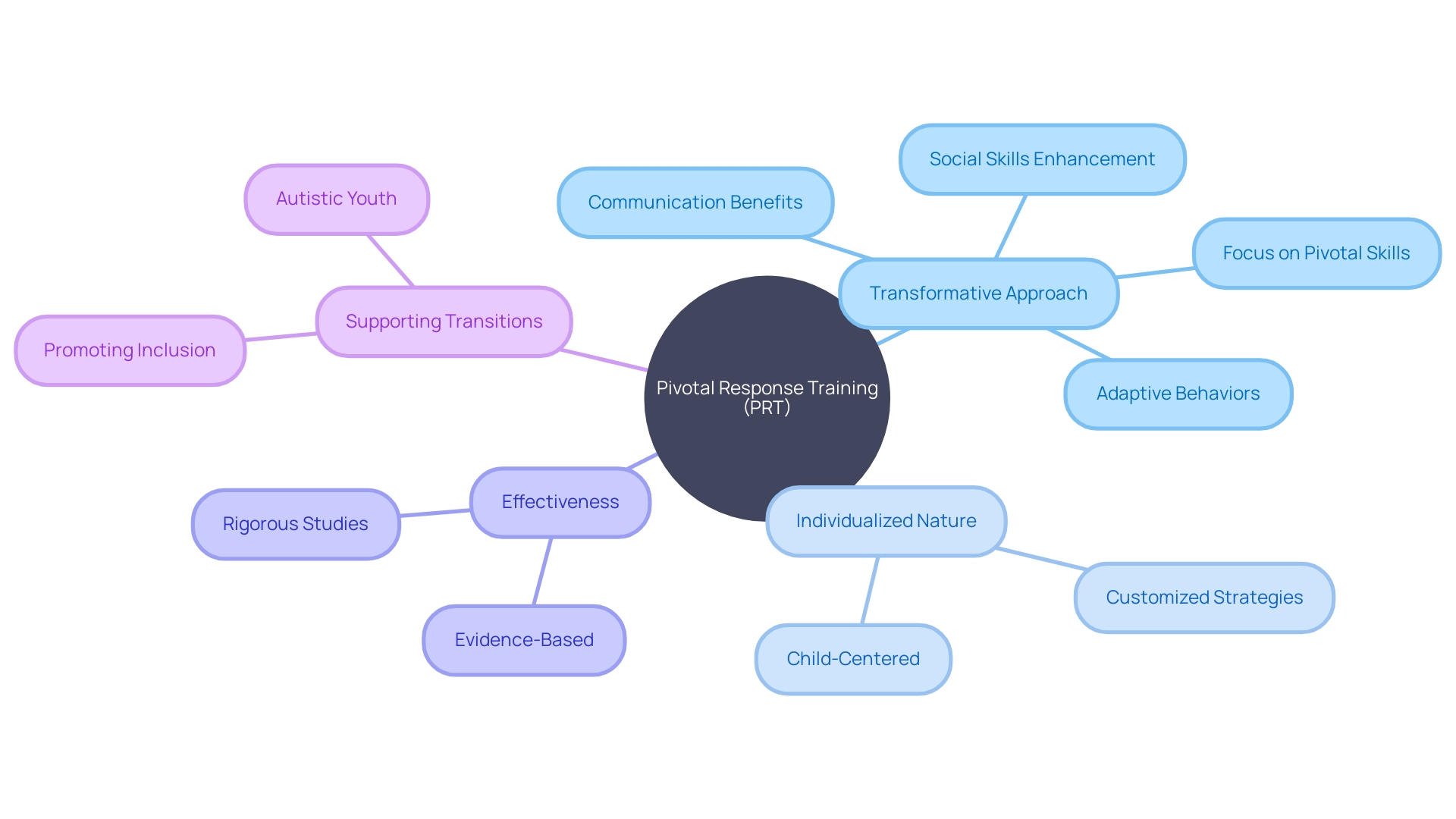
Key Principles of PRT
Pivotal Response Training (PRT) is rooted in principles designed to foster learning and development in children with autism. At its heart, PRT leverages a child's own interests and choices as a starting point for engagement. By incorporating these preferences, the training becomes more motivating and relevant to the child.
Reinforcement is another cornerstone of PRT, which involves recognizing and rewarding desired behaviors to encourage their recurrence. These rewards are naturally woven into the context of the activity, making them meaningful and effective.
A key aspect of PRT is its naturalistic teaching strategies. These strategies are embedded in typical daily activities, providing children with opportunities to learn in real-world settings. This approach ensures that learned skills are more likely to be generalized across various situations.
Additionally, PRT is tailored to each child, with individualized goals that address specific needs and abilities, ensuring a personalized path to progress. By adhering to these principles, PRT practitioners can create a supportive learning environment that promotes key developmental areas for children with autism.
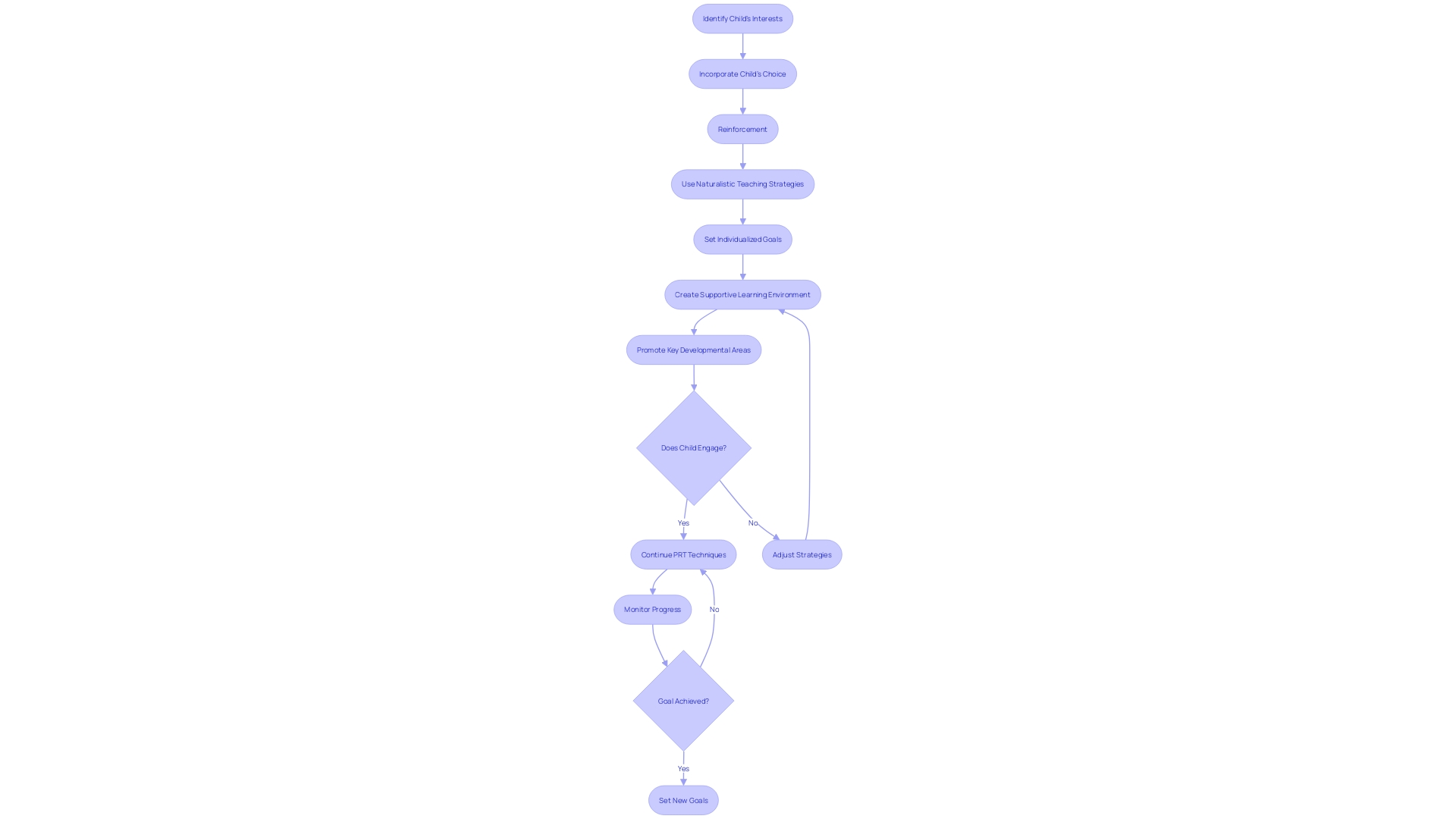
Targeting Pivotal Skills: Motivation, Self-Initiation, and Self-Management
Pivotal Response Training (PRT) is a transformative approach that empowers children with autism to engage with their environment by focusing on critical skills that propel them forward in their development. These pivotal skills include motivation, self-initiation, and self-management—each playing an instrumental role in the child's daily interactions and growth. Through PRT, we harness the child's innate interests, using them as a natural catalyst for learning and engagement.
This dynamic method encourages children to become active participants in their learning process, leading to spontaneous and meaningful behavior changes that extend beyond the therapy setting.
Motivation is a key driver in PRT, and it's not just about the immediate response; it's about kindling a long-term desire to interact with the world. When children are motivated, they are more likely to initiate communication, seek out interactions, and explore new experiences. Self-initiation, another pivotal skill, empowers children to begin tasks, ask questions, and express their needs without prompt, fostering independence and confidence.
Lastly, self-management skills cultivated through PRT enable children to regulate their behavior, set personal goals, and monitor their progress, which is essential for success in various life domains.
Embracing these pivotal skills through PRT not only enhances the learning experience for children with autism but also aligns with the ethos of ensuring that every child, regardless of their abilities, has a fair chance to thrive. Just as Dr. David (Dan) R. Offord posited, a fair race for all children includes recognizing their unique needs and strengths, reducing stress, and providing the support they require. In the context of children with autism, PRT serves as a tool to bridge gaps and promote equitable participation in life's many arenas—be it at school, home, or play.
Naturalistic Approach and Strategies in PRT
Understanding and engaging with children in their own environments is a cornerstone of Pivotal Response Training (PRT), an evidence-based intervention that has shown significant success in children with autism. This naturalistic approach is not just a method; it's an integral part of the therapy that involves tapping into a child's intrinsic interests and motivations within familiar settings. By doing so, PRT capitalizes on the child's spontaneous interactions in the environment, which can lead to more meaningful and long-lasting learning experiences.
The effectiveness of this approach is not anecdotal; it's backed by rigorous research methodologies. Peer-reviewed studies and randomized controlled trials have confirmed that interventions like PRT, delivered in natural settings, can lead to substantial improvements in social communication and adaptive behaviors. These trials are critical because they help remove any potential bias, ensuring that the results are reliable and applicable to real-world scenarios.
Moreover, the focus on natural environments aligns with the broader goals of mental health equity and support. Just as frontline health workers have been key in addressing mental health concerns through task-sharing in underserved areas, PRT allows parents and caregivers to become active participants in the therapeutic process. By integrating therapy into everyday activities at home and school, children with autism can be supported in all domains of their lives, contributing to their mental health and overall well-being.
This method also aligns with the notion that every child deserves a 'fair race' in life, as mentioned by the renowned child psychiatrist Dr. David (Dan) R. Offord. It acknowledges the unique assets that autistic children bring to their communities and seeks to reduce the chronic stress that can come from being unable to engage meaningfully in social participation. Through PRT's naturalistic approach, we're not only teaching pivotal skills but also advocating for an equitable and supportive environment that recognizes and nurtures the potential of every child.
Increasing Child Motivation During Intervention
Fostering motivation is like preparing for a well-crafted dinner party; it requires knowing your guests—children in the case of PRT sessions—and customizing the experience to their individual tastes and preferences. It's about creating an environment where children feel valued and cared for, which is essential for their engagement and learning. To increase a child’s motivation, it's crucial to understand their unique interests and needs, as emphasized by both self-determination theory and practical strategies from education specialists.
For instance, the tailored approach of the Coordinated Approaches to Child Health (CATCH) program successfully empowers young children to make healthy choices, hinting at the effectiveness of personalized interventions. Similarly, PRT leverages the interests of the child, fostering a sense of autonomy, competence, and relatedness—key psychological needs that drive motivation according to psychologists Edward L. Deci and Richard M. Ryan. It is about connecting on a personal level, establishing a safe and inclusive environment, and personalizing content to make each child feel heard and understood.
Drawing on these insights, developing a motivational strategy in PRT involves more than just a set curriculum; it necessitates an adaptive, responsive approach akin to the continuous feedback and revision seen in successful parenting programs in Bhutan and Zambia. It's about building a connection, much like knowing the dietary preferences of your dinner guests, to foster a welcoming atmosphere where a child's motivation can flourish. Creating such an environment can significantly increase the likelihood of sustaining active participation and effective learning, which is as crucial as meeting the milestones of a construction project, where each beam represents a step towards the completion of a structure.
In PRT, each motivated engagement represents a pivotal step toward the child's developmental progress.
Implementing PRT: Steps and Techniques
Pivotal Response Training (PRT) is more than a set of techniques; it's a transformative approach that empowers children with autism to engage with the world. To implement PRT, one begins by identifying what success looks like—not just a year of growth, but a closing of developmental gaps to meet peers at their level. This aligns with the insights of educators who emphasize the importance of setting clear, measurable goals for interventions.
Creating a supportive environment is crucial, and it starts with behaviors and practices that foster psychological safety, such as welcoming incomplete ideas and refining work processes. As one expert puts it, it's about distinguishing the 'how' from the 'what' in our interactions and activities. In the context of PRT, this might involve adapting the learning space to the needs of the child, ensuring they feel secure, understood, and ready to learn.
The teaching techniques utilized in PRT hinge on the child's own interests, turning motivation into a pivotal skill. For instance, if a child is fascinated by cars, lessons might be centered around automotive themes to capture their attention and stimulate engagement. This personalized approach mirrors the latest research in autism interventions, which calls for a critical evaluation of nonpharmacological studies, with a focus on the effectiveness and potential impacts of the interventions.
Research has shown that when interventions like PRT are chosen, they should be backed by the most thorough studies—preferably randomized controlled trials rather than quasi-experimental designs. This ensures that the intervention's efficacy is not just anecdotal but scientifically validated, which is increasingly the standard in autism research.
In summary, PRT is about tailoring the learning experience to the child's needs, using their natural interests as a springboard for development. It's about setting goals that are ambitious yet attainable, and embracing practices that create a foundation of trust and openness. With these steps, PRT can unlock a child's potential and foster skills that resonate across their lifetime.
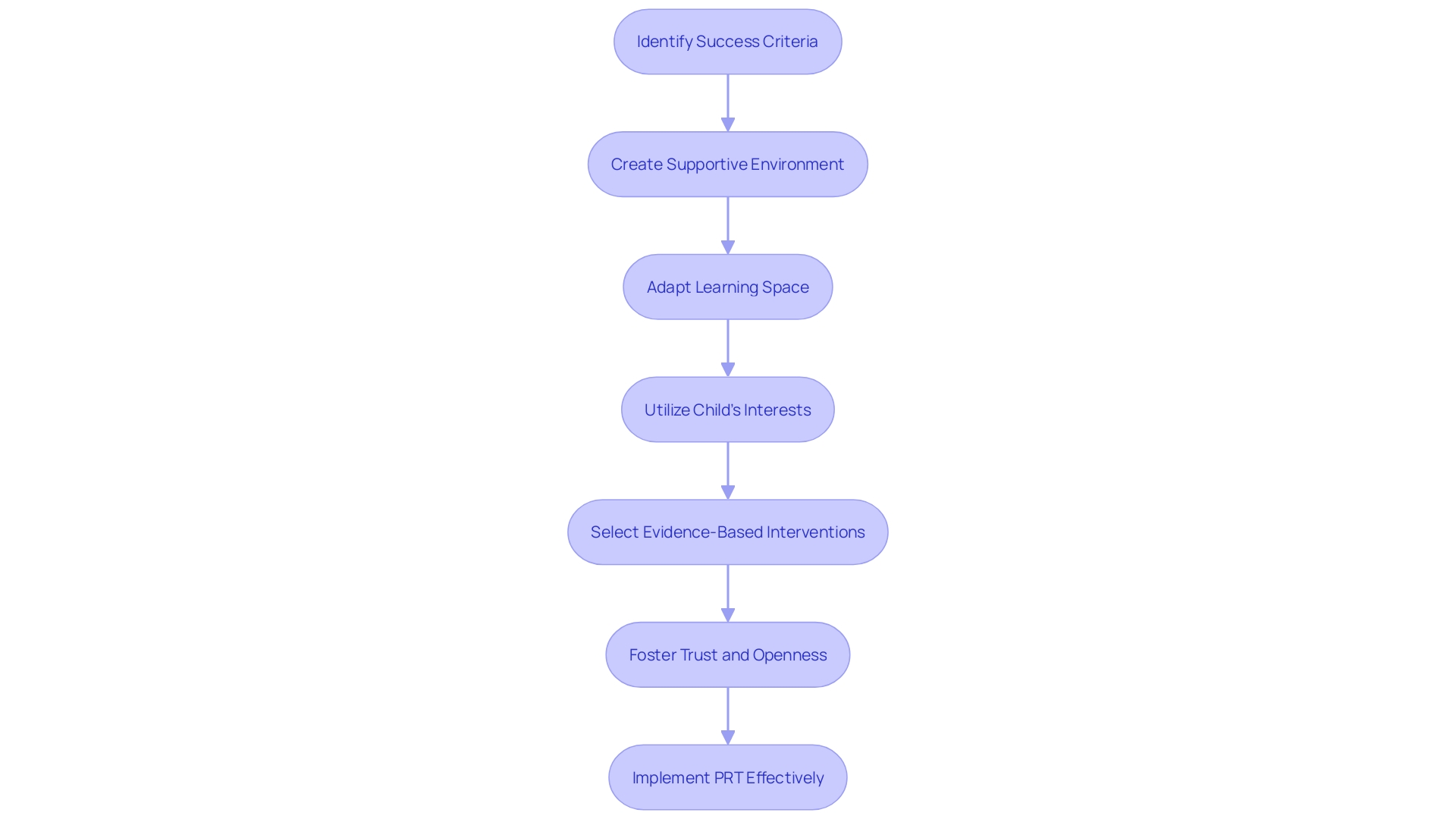
Teaching Language, Communication, and Social Skills Using PRT
Pivotal Response Training (PRT) stands out as an effective educational approach for enhancing communication, language, and social skills among children on the autism spectrum. This method empowers children by tapping into their innate interests, promoting active participation and learning in a natural setting. By targeting pivotal areas of a child's development, such as motivation and self-management, PRT facilitates meaningful improvements in vital social competencies.
The late Dr. David (Dan) R. Offord's vision of a 'fair race' for all children, including those with disabilities, echoes the essence of PRT. It aligns with the goal of fostering equitable and engaged participation within key life domains—school, home, and leisure—thereby supporting mental health and overall well-being. Acknowledging the unique challenges and strengths children with autism bring to their communities, PRT aims to alleviate stress and equip caregivers with the necessary tools to nurture their children's growth.
For autistic children, particularly those facing additional emotional and behavioral difficulties, PRT offers a pathway to more inclusive social engagement in educational and community settings. Autism spectrum disorder (ASD) presents early in life with distinctive social communication hurdles and behavior patterns. PRT addresses these core challenges directly, providing a structured yet flexible framework for enhancing social interaction.
As research into augmentative and alternative communication (AAC) for children with developmental disabilities advances, experts continue to refine strategies to support communication through partners like siblings, parents, and educators. This ongoing work, including the development of new training interventions for school-based speech-language pathologists (SLPs), mirrors the collaborative spirit of PRT. Conversations about diverse perspectives, such as discussing characters' feelings or 'Would you rather...' scenarios, further enrich children's understanding of the world around them.
As we embrace the principles of PRT, we contribute to making the race fair for every child, ensuring all have the opportunity to reach their full potential in a supportive and understanding society.
Role of Parents and Practitioners in PRT
The synergy between parents and practitioners is the cornerstone of Pivotal Response Training (PRT), a transformative approach tailored for children with autism. The success of PRT hinges on the dynamic collaboration between these two groups. It's not just about setting goals but also about crafting a pathway of communication and support that resonates with the needs of the child.
As emphasized by Chris Voss, a former FBI negotiator, understanding the meaning behind a 'no' can open doors to effective communication. This principle is vital when working with parents in PRT, where uncovering concerns and reaching a common understanding is crucial. Alfred Hitchcock's meticulous script approach serves as a metaphor for this process, illustrating the importance of not only presenting information but also being mindful of how it is received emotionally by parents.
Drawing from real-world cases, such as the parenting programs in Bhutan and Zambia, we see the impact of incorporating feedback to enhance program delivery. The evolution of these programs demonstrates the significance of quality engagement between the workforce and parents, akin to the partnership in PRT. The adjustments made to delivery manuals and the integration of refresher courses mirror the ongoing support essential for PRT.
In the words of an expert on children's anxiety disorders, success is a journey that began decades ago. This journey of discovery and continuous improvement is reflected in the PRT process, where practitioners and parents unite to create an environment conducive to growth and learning. The objective is clear: to facilitate the child's acquisition of pivotal skills, ensuring they can thrive and catch up to their peers.
The stories shared and strategies employed all converge on a singular vision - to create an equitable, supportive, and effective environment for the child's development. Parents and practitioners, through PRT, are the architects of this vision, each playing an integral role in the child's progress and well-being
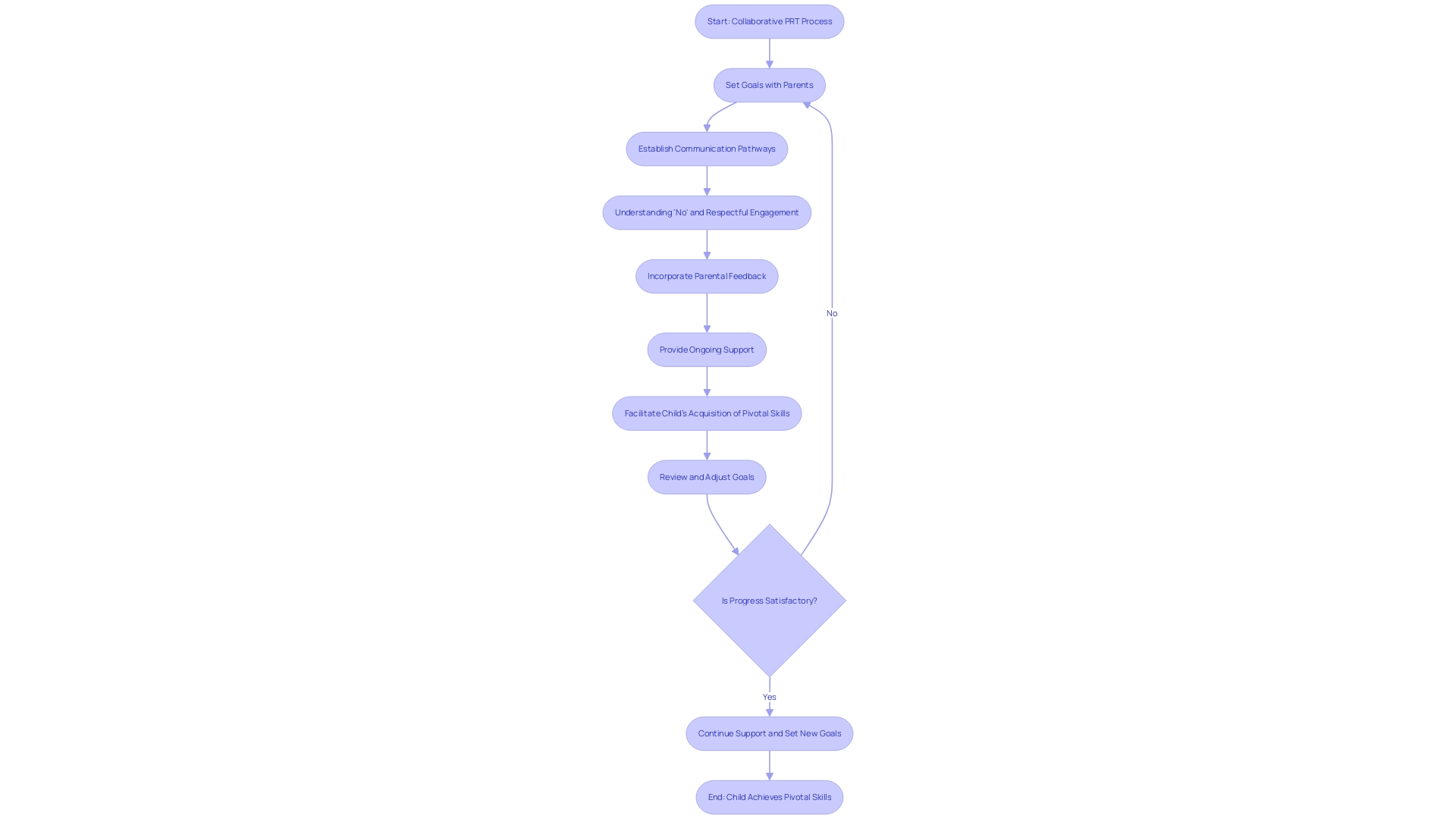
Empirical Evidence and Effectiveness of PRT
Pivotal Response Training (PRT) is more than just an intervention; it's a beacon of hope for children with autism and their families. The essence of PRT lies in its ability to hone pivotal skills that serve as the building blocks for a child's development, encompassing areas such as motivation, self-management, and social interactions. The evidence supporting PRT isn't just anecdotal; it's grounded in robust research that illustrates its transformative potential.
Autism Spectrum Disorder (ASD), as a neurodevelopmental condition with early onset, presents challenges in social communication and exhibits a pattern of repetitive behaviors. It's a reality for many, with estimates suggesting that between 31–55% of individuals with ASD also experience co-occurring intellectual disabilities. The stakes are high, as these children are at a greater risk of being marginalized from everyday social engagement in school and community settings.
The late Dr. David (Dan) R. Offord, a renowned child psychiatrist, once metaphorically described growing up in society as a 'race,' advocating for a fair chance for every child, including those with disabilities. This sentiment echoes the core goal of PRT—to level the playing field, ensuring that every child has the opportunity to participate fully and meaningfully in life's domains.
Research syntheses critically evaluating nonpharmacological interventions, including PRT, have shed light on the challenges of assessing their effectiveness and potential harms. Yet, despite these hurdles, PRT stands out for its capacity to facilitate vital social participation, addressing both the needs and strengths of autistic children. The commitment to understanding and improving intervention quality reflects a deep respect for individuals with autism, emphasizing the importance of their well-being and inclusion.
In an era of continuous scientific advancement, it's essential to navigate the ethical landscape that surrounds emerging research, such as the transplantation of human brain organoids into animals. While the implications of such studies are profound, they also underscore the necessity of ethical scrutiny—a principle that aligns with the conscientious approach PRT advocates take when supporting children with ASD.
In sum, PRT is not just an intervention; it's a commitment to social equity, a research-backed pathway to enhancing the mental health and well-being of children with autism, enabling them to engage peacefully and supportively in their communities.
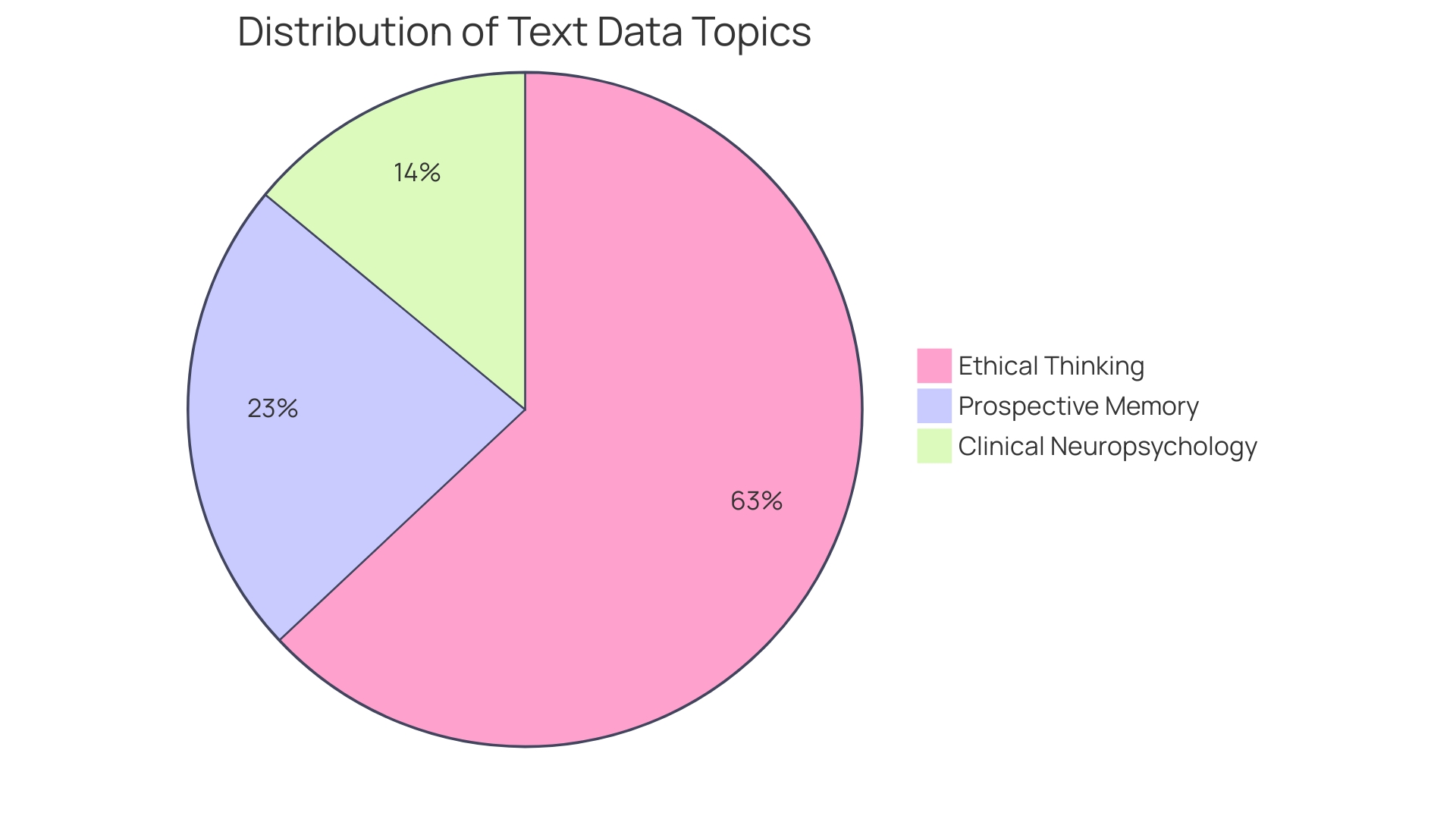
Combining PRT with Other Interventions and Settings
Pivotal Response Training (PRT) is not a solitary module but rather part of a comprehensive approach in supporting children with autism. By weaving PRT into a fabric of complementary interventions and tailoring it to fit diverse environments, we optimize its impact. The essence of PRT's adaptability lies in its foundation on pivotal areas of a child's development, such as motivation and self-management.
As research underscores the significance of behavioral science in health programs and clinical care, PRT emerges as an exemplar of this integration, leveraged for its evidence-based efficacy. Its versatility is further evidenced in settings beyond the clinical space, such as schools and home environments, where it can be aligned with daily routines and existing support structures.
The real-world effectiveness of PRT is mirrored in the successful implementation of blended learning strategies in healthcare training, as showcased in Addis Ababa, Ethiopia. Digitalized approaches have demonstrated efficiency and quality in training, a concept that can be translated into PRT programs. These strategies underscore the importance of flexible and adaptive learning environments in achieving optimal outcomes.
In the realm of public health and education, the principles of equity and inclusion are paramount. For children and youth with disabilities, including those on the autism spectrum, access to interventions like PRT is a step towards ensuring fair participation in all spheres of life. It provides a way to recognize and build upon the unique strengths they bring to their communities.
As noted by child psychiatrist Dr. David (Dan) R. Offord, a fair 'race' for our children means acknowledging and addressing their needs while bolstering their potential.
Furthermore, as the landscape of higher education evolves, with an estimated 0.75% of the UK's higher education population exhibiting social or communication difficulties, the need for supportive measures like PRT is clear. Autistic students can thrive academically with tailored support that acknowledges their distinctive learning styles and strengths, such as meticulous attention to detail and alternative problem-solving approaches.
Incorporating PRT into a holistic treatment plan is a forward-thinking move, aligning with the global trend of employing behavioral science to enhance life outcomes. It is a testament to the growing acknowledgement that interventions must not only be effective but also resonate with the community's needs and aspirations. By doing so, we ensure that interventions like PRT are not only evidence-based but also meaningful and sustainable in fostering the development of children with autism.
Monitoring Progress and Adjusting PRT Plans
Ensuring that each child achieves their full potential requires vigilant observation and dynamic approaches to Pivotal Response Training (PRT). As we navigate the path of child development, it's crucial to assess progress meticulously and adapt our strategies accordingly. This involves gathering data on the child's response to intervention, which serves not only as a progress indicator but also as a guide for fine-tuning our methods.
Tailoring PRT to the child's evolving needs is a continuous process, much like adjusting sails to the changing wind to keep a boat on course. By embracing this adaptive approach, we can foster an environment where children with autism can thrive, reduce stressors, and help families support their child's journey towards meaningful social participation and well-being.
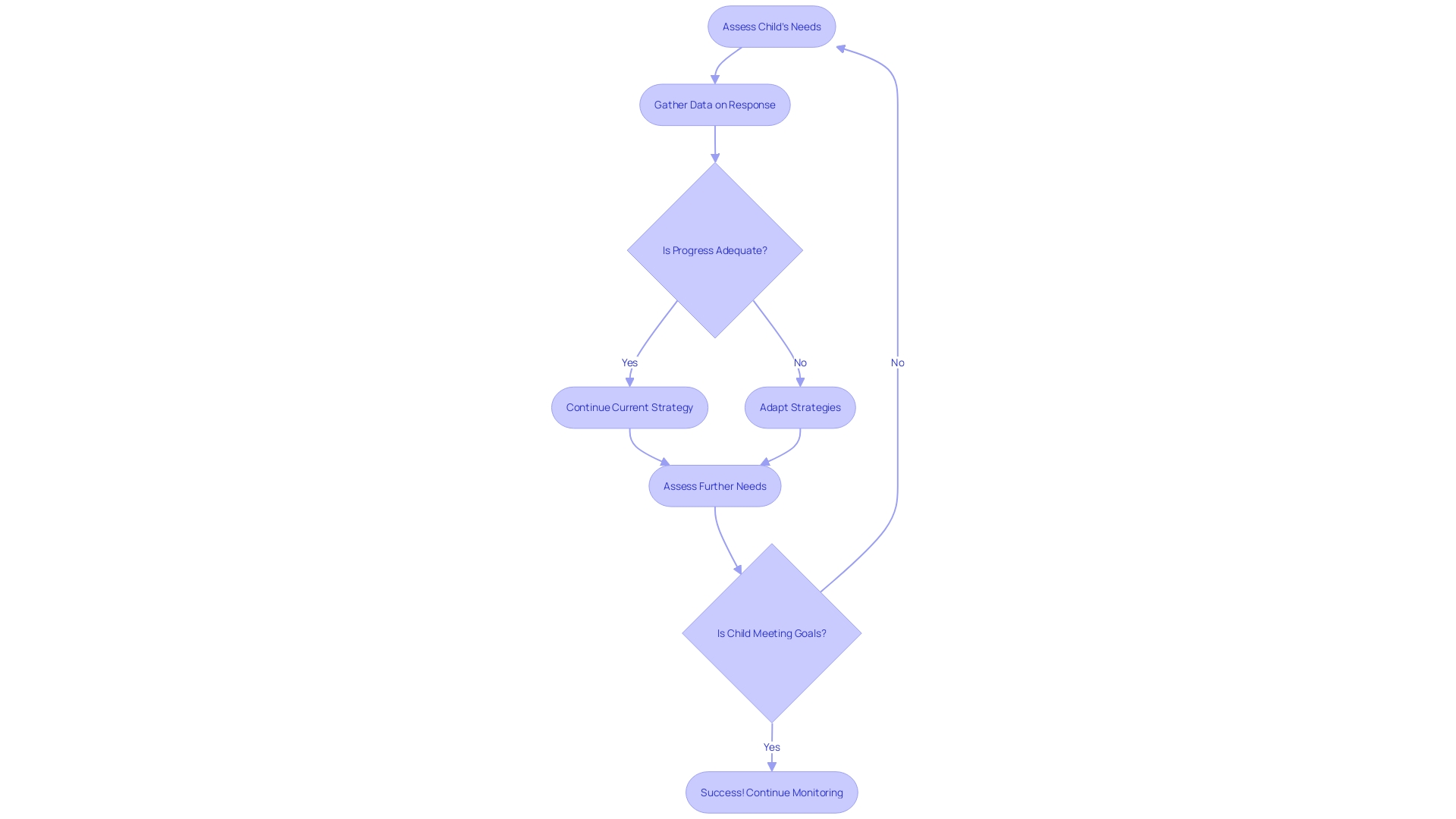
Conclusion
Pivotal Response Training (PRT) is a transformative approach that empowers children with autism by focusing on key areas of growth. It leverages naturalistic teaching strategies to tap into a child's intrinsic interests, promoting active engagement and learning. By nurturing pivotal skills such as motivation, self-initiation, and self-management, PRT enables children to become adaptable and responsive, leading to enhanced communication, social skills, and adaptive behaviors.
PRT's individualized and child-centered approach provides parents and caregivers with the means to support their children's development and well-being, reducing stress and promoting mental health. By embracing PRT, we create an equitable and supportive environment that recognizes and nurtures the potential of every child with autism.
Fostering motivation is crucial in PRT, tailoring the learning experience to the child and creating a safe and inclusive environment. By setting clear goals and fostering psychological safety, PRT increases the likelihood of effective learning and sustained participation.
PRT stands out as an effective educational approach for enhancing communication, language, and social skills among children with autism. By tapping into their innate interests and targeting pivotal areas of development, PRT facilitates meaningful improvements in vital social competencies.
The synergy between parents and practitioners is vital in PRT, with dynamic collaboration playing a crucial role. Parents and practitioners create an environment conducive to growth and learning, facilitating the acquisition of pivotal skills and promoting overall progress and well-being.
The evidence supporting PRT is grounded in robust research, illustrating its transformative potential for children with autism. By providing access to interventions like PRT, we recognize and build upon the unique strengths of children with autism, leveling the playing field and fostering their development and inclusion.
Incorporating PRT into diverse settings supports the mental health and well-being of children with autism, fostering their development and inclusion in all spheres of life.
Monitoring progress and adjusting PRT plans are crucial for each child's full potential. By gathering data and adapting strategies accordingly, we cultivate an environment where children with autism can thrive, promoting meaningful social participation and well-being.




